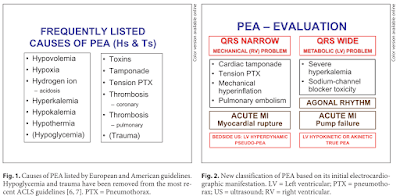"Why Ultrasound Belongs in EMS"

While perusing the the twitter sphere I found this tweet... Ultrasound in every service.My #ECCU2015 pick with Drew Harrell MD @tingles005 @paramedic_al https://t.co/CUAHCNagaI pic.twitter.com/mQs1Tj6eZc — Word on the Street (@wotsukrobl) December 11, 2015 It really caught my eye thanks to the paper I just wrote and shared here . Point of Care Ultrasound (POCUS) has great utility in acute care and it will probably be the only imaging modality that could reasonably be put in an ambulance. Sonosite and Philips just released pocket/tablet form US devices that could easily be kept next to a cardiac monitor. If Philips is listening they will realize they make EMS cardiac monitors and US probes that could be added together... just an idea.
